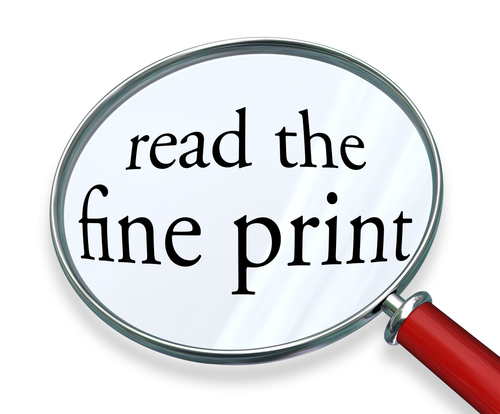How Business Owners and Other Professionals Can Manage Financial Risks
- Diversify Investments
- Keep a Cash Reserve on Hand
- Maintain the Right Amount of Insurance
- Know When to Get Out
- Always Read the Fine Print
Growing a business today comes with a lot of uncertainty. Many formerly in-person procedures have shifted to digital operations. Supplies are harder to get because of the disruption of global supply chains. The things you can get cost more. Where those increases occur is hard to predict because of the complexity of manufacturing. For instance, one cartoon shows a restaurant customer asking how a hamburger could cost $30. The reply is that it comes with toothpicks and wood is expensive. Ask 10 financial experts to list the ways to manage financial risk of personal and corporate investing, and you will get 10 different answers. Those answers do, however, have many points in common.
Every business owner, manager, banker, investor, or individual looking to grow their money should know these top five steps to manage financial risk. These are not the only five steps for risk management when it comes to money, but they are important. These tips can also be applied to other situations in business and in life.
Diversify Investments
An old adage discusses not putting all of the eggs into one basket. This ancient advice holds up well today when it comes to investments. Diversification of investments lessens exposure to risk. Let’s say a person has their investments spread out across:
- rental property
- bonds,
- stocks,
- mutual funds
- a CD
- some cash in reserve
That person will not have as big of a hit if the real estate market tanks or the stock market drops 10 percent in one day. Risk is directly tied to return. So a person has to find their tolerance to mitigating risk through a slightly lower than maximum return.
It is vital, in using the diversification tool, to create portfolios that include several investments. It is just as important, or maybe even more critical, to choose investments that are not closely related. That requires doing some “ homework” investigating the history and supply chains of companies you are considering. The example of the hamburger used above is comical, but pertinent. If many of your investments involve petroleum, even in a minor role, those investments will all be affected by changes in the petroleum market.
Another factor in diversification is that, although it serves as a hedge against a big financial blow, it also limits the ability of a portfolio to grow quickly. An explosive growth in the petroleum industry, for example, could result in a corresponding explosion in the value of a petroleum-based portfolio. At the same time other types of investments would not be affected.
Keep a Cash Reserve on Hand

Another part of managing risk is keeping a cash reserve on hand. A person or business owner never knows when an emergency will happen. Perhaps a strong storm comes through and blows the roof off of a home or building. Even with insurance, a deductible will apply. In the case of a business, the doors may have to remain shuttered until repairs are complete. In the case of a home, the occupants might have to temporarily relocate. That expense might not be covered by insurance. A cash reserve reduces exposure to debt.
So, how much cash should you or your company have in reserve? One formula suggests an amount equal to three-to-six months of operating expenses. That reserve is a safety net, but if too much cash is kept back it will limit the amount that is available for investing. That means it’s important to take a close look at financial statements to see how much capital is necessary for:
- the operation of the business
- for a personal budget
- determining the average cash flow.
Another meaning of the term “cash reserves” is a type of easily liquidated stock. Sometimes companies and individuals include such investments in their portfolios as they contribute to the value of the portfolio as a whole. They might even accrue value, but they can be quickly liquidated to gain access to emergency funds. This type of cash reserve also minimizes the amount of actual cash that must be kept in backup funds.
Maintain the Right Amount of Insurance

According to Business Insider, individuals and business owners should also maintain the right amount of insurance. This is a key step in managing financial risks because it reduces the out-of-pocket amount that would have to be paid in the event of a catastrophe. A few of the essential insurance policies to consider are:
- liability
- property
- homeowner’s
- business
- disability
- life insurance
Insurance is critical, but you need to understand the policies and what they do and do not cover. Insurance that has huge gaps in coverages leaves you or your business vulnerable to volatility in the economy as well as changes in the operations of a business or personal lifestyle. One comparatively new type of insurance addresses the mid-and-post pandemic shift to digital operations. Because so much information is stored digitally, individuals and their companies are susceptible to hacking and the damage it can cause.
One of the ways to manage financial risk involves deciding on the right amount and types of policies to buy in accordance with the risks you or your company are willing to accept. Again, over-insuring or inappropriate insuring ties up funds that could be used to create financial growth.
Know When to Get Out
Knowing when to get out of an investment is critical to avoiding big losses. Each person or business has to set their threshold for a loss. Some people have more comfort than others. Have an exit strategy prepared, and take the emotion out of the decision to divest from an investment.
Setting acceptable risk levels depends upon several things. One of these is the available capital for a portfolio. This includes the cash reserves discussed earlier. If a company or individual is comfortable with a certain degree of risk but financial changes push them beyond that level, it becomes tempting to take out loans. Forbes, however, says that loans increase financial liability. They can also tie up funds when the stability of the company improves and they would otherwise invest the funds into operations or building their portfolios. If the economic change that fueled the increased investment persists, a company or a person could financially be “bled dry.”
Always Read the Fine Print

An elegant Tom Waits quote explains that, “The big print gives, and the small print takes away.” It is a standard but not smart practice for people to sign without reading the fine print. Online, most people just check that they read the terms and conditions so that they can continue with what they were doing. Reading the fine print is a key part of managing financial risks. The fine print often says:
- what the terms are for exiting a contract
- what types of penalties may be incurred
- how much fees can be charged and under which circumstances they apply
Each of these five steps to managing financial risks lessens a person’s or business’ exposure. There are some other important actions to take, including:
- minimizing or eliminating debt
- maintaining good health
- keeping up with desirable employment skills
Each of these five steps to manage financial risk is essential for an investor or business owner to know.
ERM- The Toolbox that Holds the Tools
Each of the five tactics discussed is a tool for financial wellness, just as having regular checkups and eating the right types of foods are tools for achieving physical wellness. These tools fit well into a toolbox. There’s a strategy called Enterprise Risk Management (ERM). Ordinarily, this process involves a team. Individuals who are thinking about the financial risks they navigate might include:
- insurance agents
- advisors
- banks
- other specialists on their team
However, the decisions made are ultimately made by one person. Corporations, however, have:
- executives
- managers
- boards
- committees
Accessing the ERM toolbox is a bit more complex for companies than for individuals.
Beginning
An article on the website fiserv.com suggests that the first step corporations must take is initiating the program. It can be daunting to create a risk management program. “Selling” that program to all the individuals involved can be terrifying. Nevertheless, it must be done. As in any procedural change, the process must begin with officers and managers.
Eliminate Competition
Imagine that the people on the individual investor’s team begin competing to gain prominence. One advisor might contradict another simply to maintain the “power position.” In a corporation, there are committees and subcommittees as well as departmental representation. Here, such competition would be disastrous. An individual investor would simply evaluate contradicting information and make a decision. Corporations must arrive at unity among all stakeholders, making people understand that they are vital parts of the company is vital.
Measure Risk
Companies must create a system of comparing risks. You might think of it as determining the return on investment (ROI) to the business. One method of doing this is to assign numerical values to proposed risks. Then decide on an acceptable level of risk-taking. While some risks are worth accepting because of their possible returns, others are not even worth considering because failure would result in catastrophe.
The other facet of this is that risks are cumulative. While companies might agree that three investments are worth taking, the cumulative effect of losing at all three could demolish the corporate portfolio or even ruin the business. This risk-measuring is involved in using the tool of setting limits and knowing when to get out of an investment.
Risk Management Isn’t Reactionary
The five steps given to managing investment risks are not intended to remedy a portfolio collapse. They are growth tools. In other words, they are methods investors can use to grow their businesses or to increase their personal portfolios through being proactive. A person considering a long road trip makes preparations by studying a map and taking inventory of his resources. The person who wants to build wealth must:
- know how much capital he has to invest
- understand the nature of risk (the higher the risk, the greater the return)
- decide how much energy to put into the program
Risk Management Harder Today
A person or company desiring to manage financial risk of corporate and personal investing will soon discover that it is more difficult today than in the past. One of the things contributing to this issue is the explosion of digital data. Since the pandemic of 2020, more people are shopping online. Even things like test drives to buy a new car or showings of new homes can now be done online. That directly affects the value of stock in brick-and-mortar establishments. It also means that more investments are in intangible assets that may be harder for companies and individuals to monitor.
Technology also plays a role in making in making financial risk management more difficult because it is harder to monitor trends. Things exist today that couldn’t have been imagined a decade ago. For instance, Bitcoin has changed the face of traditional investing, It’s being considered as legal tender in some countries. Amazon.com has made the virtual assistant “Alexa” a member of many households. Things like clocks have become obsolete because we keep time on our smartwatches and smartphones. Traditional photography film has been replaced by digital cameras. Investment portfolios that have stock in these icons of the past are carrying “dead wood.”
Another factor in the difficulty of managing financial risk is the worldwide nature of the economy. Now, as never before, there is an intertwining of global resources and markets. People do not invest in a vacuum environment. Let’s say there’s political unrest in a country supplying tree sap to a corporation in another country that uses the sap to manufacture pharmaceuticals. This unrest can have huge implications that altar the financial landscape for everyone from hospitals trying to procure the medicines to those investing in the pharmaceutical companies.
This type of disruption in the supply chain is more frequent and long-lasting since the incidence of Covid-19. Companies are being proactive by making their supply chains more flexible and resilient. Investors should use tools such as these five steps of financial risk management to build resilient and flexible portfolios. They must withstand the financial uncertainties of a changed financial environment. Such investments can not only withstand those changes but become instruments to create financial security for investors and for their companies.
Related Resources:

